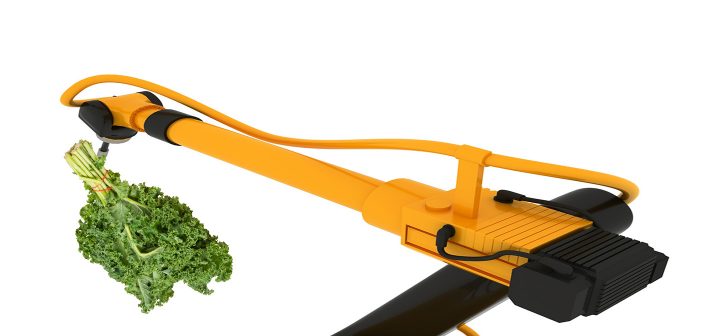I don’t think I would know kale if it hit me in the face but it seems to be pretty popular with the crowd that shops at Whole Foods – which was recently acquired by Amazon. Most people reacted with surprise at the acquisition as there really doesn’t seem to be much of a match there till you dig a little deeper. This article does a pretty good job of doing that digging for you but let me summarize some key findings. The biggest synergy opportunity is in the supply chain expertise that Amazon brings. Amazon’s key differentiator is the amazing expertise in warehousing, distribution and logistics. The amount of technical innovation that Amazon has brought to bear to their business model is truly amazing. It is conjectured that they may soon have warehouses that will be run with just one or two people!!!
Applying that same expertise to groceries will allow them to significantly cut costs at Whole Foods and bring fresher produce to the shelves (decreasing spoilage in the process). They will also be looking at delivering to your front door (perfect application for drones which they are already experimenting with?). This also gives Amazon the volume it needs to invest in refrigerated warehouses which are essential for perishables, not an area that Amazon has been in so far.
This also allows Amazon to get into small brick and mortar locations in the urban areas that are highly automated where the consumer comes in, picks up their daily needs and gets billed directly. In taking on Walmart, this push into groceries and perishables is given high marks as a winning strategy – another reason why this made sense for Amazon.
Lower costs and therefore lower prices will allow Whole Foods to expand their customer base from those that eat and can afford kale to those that can afford a cheaper kind of green in their salad. For so long, Whole Foods has been focused on the higher end of the market leaving it with limited opportunities to expand. And apparently, part of the reason for their high cost and therefore high price structure is inefficiencies in distribution and logistics. And by the way, application of technology and robotics to distribution and logistics had not dampened hiring by Amazon – their employment was up by a whopping 43%.
This level of automation in traditionally high employment functions like distribution and logistics does clearly mean displacement of workers but it seems that the workers being displaced are at the low end of the wage spectrum which may not be that bad a deal. Given that we are at full employment or even better, it would seem that wage pressures should be rising and clearly they are not. If we keep eliminating lower paid jobs, perhaps wages can start rising again adding to buying power in the economy.
I remember watching the Jetsons (yes, I am that old) and it all seemed like a fantasy. Yet, we now have the technology where you can tell Echo (the smart speaker from Amazon) what your grocery needs are and Echo will communicate with a robot at a warehouse and a drone will pick it up and deliver it to your front door. Heck, you don’t even have to tell Echo anything if you have it connected to a smart refrigerator. It will do a quick inventory and based on your order pattern have it delivered without you doing anything and make the payment on your behalf too. Amazon is proving that a better supply chain competency as an organization can lead to dominance in the market. Kale anyone?

